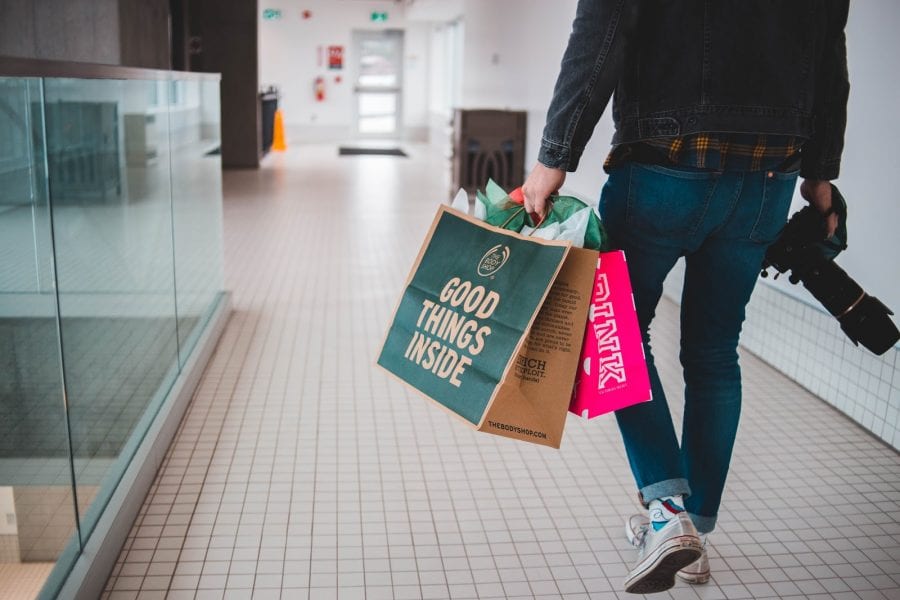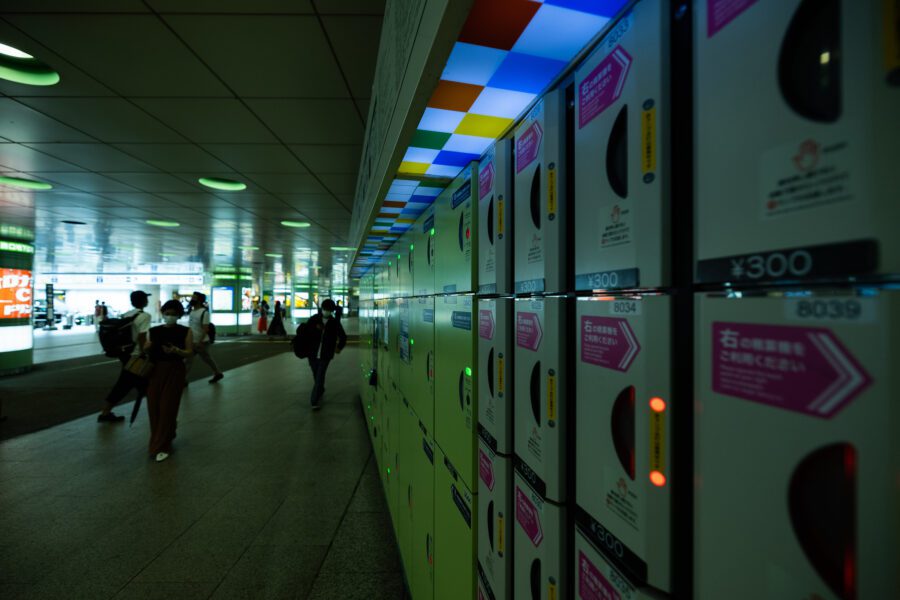
Open Locker Network
6 Ways to Improve Public Transportation Stations in Your City
Written by: Parcel Pending
6 Min Read
Published: March 25, 2024
Updated: April 18, 2024
The public transportation system across America remains disrupted in the wake of the pandemic. However, solid public transportation systems provide the backbone for vibrant cities and communities. By modernizing transportation networks, solving last-mile gaps, and creating mobility on demand, there’s the opportunity to make public transportation systems more functional, efficient, and safe for the community.
Key Factors Shaping Public Transportation
The urgent need for public transportation improvements can be traced to three key transit system developments in recent years:
The Pandemic Effect
In March of 2020, public transportation ridership plummeted 80%.1 By April, major metro cities saw that transit service decline hit 88%. Most U.S. cities have not yet recovered to their pre-pandemic ridership levels. Boston, for instance, sits at roughly half of its previous commuting numbers, and public transport system revenue in California from fares tumbled from $1.9 billion in 2019 to a mere $390 million in 2021.2
Climate Change
More than 40% of California’s greenhouse gas emissions come from the transportation sector, specifically cars. The Golden State has set an ambitious goal of reducing greenhouse gases by 48% by 2030; while other states may not be quite as ambitious, California often serves as a bellwether for environmental action in the United States. For instance, transit agencies in California and other states are looking to public transit initiatives to help reduce greenhouse gas emissions. In 2018, public transport in the U.S. saved 63 million metric tons of carbon dioxide emissions.3
A New Work Model
The remote trend that started during the pandemic remains a preferred work model for employees – one that is decimating significant cities. Without daily workers, public transportation is down, office buildings are sitting empty, and small businesses such as coffee shops, restaurants, barbers, salad bars, and retailers are closing their doors. A hybrid work model with a few days in the office per week is helping some major cities adjust to a new normal.
Options for Improving Public Transportation
There is no “one size fits all” in mass transit. Each municipality is different, requiring custom solutions to address transit riders’ needs and meet budgetary requirements. Here are a few public transport system strategies to consider:
Increase Capacity on High-Traffic Routes/Lines
One of the contributing factors to taking a car versus public transportation is the time of the commute: public transit is invariably longer. Adding more buses or trains to high-traffic routes lowers the risk of overcrowding and ensures that the wait between arriving cars or buses is shorter.
Make Commuting Safer
Tied to the capacity issue is safety. The more frequently a train enters a train station or a bus makes a stop at a bus station, the safer a commuter feels. The presence of security officers also boosts feelings of security.
Improve the Commuter Experience
Sometimes the best way to make improvements to mass transit is to ask the ridership directly about what they need. Mayor Michelle Wu of Boston takes her city’s public transportation and elicits suggestions by talking to commuters; in this case, heated bus stops would help considerably.4 She also recently converted three bus lines in under-served communities by making them fare-free.
Create Multi-Modal Hubs
Leaders should consider creating multimodal hubs where people can conveniently transfer between buses, trains, bikes, scooters, and other modes of transportation. This thinking requires transportation departments to employ Mobility-On-Demand (MOD) and Mobility-as-a-Service (MaaS) models. MOD treats transport as a product, assigning distinct values to various modes of travel based on the journey’s cost, duration, wait times, number of transfers, convenience, and other factors. In this manner, commuters can rely on MOD information to select the quickest and most inexpensive route to their destination. MaaS solutions combine various transportation modes wrapped up with one fee.
Electrify Transportation
Bus routes and commuter rail lines operating on electricity reduce noise and air pollution. They also assist in meeting regulators’ goals of reducing greenhouse gas emissions.
Build Climate Change Resistant Infrastructure
Although slowing climate change is the ultimate goal, the need is now to build the public transportation infrastructure to withstand flooding that has recently hammered cities like New York City and Los Angeles.
Benefits of Adding Parcel Lockers to Mobility Hubs
Augmenting mobility hubs to include parcel lockers can help municipalities provide additional services for their ridership while reducing traffic congestion, improving safety, decreasing package theft, and promoting sustainability:
Reduce Emissions and Congestion
To test the theory that electronic lockers boost efficiencies and decrease delivery truck congestion and pollution, Parcel Pending entered into a pilot project with the University of Washington and its Urban Freight Lab. The study results were remarkable – parcel lockers significantly reduced failed deliveries and slashed delivery truck parking time by a hefty 78%.5 There was also a significant reduction in dwell time (when a truck is parked in a loading zone), further reducing traffic and emissions.
Improve Community Safety
Although safety must balance perceptions vs. reality, a recent Parcel Pending by Quadient consumer survey revealed that 50% of residents feel parcel lockers would make their community safer.6
Decreases Package Theft
A 2023 Safewise survey revealed that 76% of those surveyed had a package stolen in the last 12 months and nearly 40% had more than one package stolen in the same timeframe.7 The Parcel Pending consumer survey results support the sentiment around this growing problem, with 35% of respondents reporting being more worried about package theft now than before the pandemic.8 In short, conveniently placed lockers can help create a safer environment for residents and workers by reducing package theft in neighborhoods.
Promotes Sustainability
In talking with Seattle commuters, 67% of respondents at its three light rail systems reported strong interest in using lockers.9 Further, they were willing to walk three to six blocks carrying their package, lowering the need for individual pickups or delivery to homes. In the UK, consumers would replace 47 deliveries yearly by trip chaining, resulting in 1.4 billion miles saved by couriers.10
The public transportation issue is complicated, needing strong leadership, innovation, technology, and a willingness to accept the permanent shifts in consumer behavior stemming from the pandemic. Working on solutions now will pave the way for a more robust foundation later.
Ready to deliver MORE for public transit riders in your area? Speak to a parcel management expert today about how hosting an open locker network location can support your municipality’s mobility goals.
Sources:
- Zipper, David. How to save America’s public transit systems from a doom spiral. www.vox.com. March 27, 2023. https://www.vox.com/future-perfect/23653855/covid-transit-fares-buses-subways-crisis
- Tolkoff, Laura. How California Can Help Transit Survive – and Thrive. www.spur.org. March 17, 2023. https://www.spur.org/news/2023-03-17/how-california-can-help-transit-survive-and-thrive
- Allwright, Anna. To make U.S. mobility more sustainable, improve access to public transit. www.masstransitmag.com. August 23, 2022. https://www.masstransitmag.com/technology/article/21276588/to-make-us-mobility-more-sustainable-improve-access-to-public-transit
- Baker, Kamrin. Mayor of Boston commutes with residents to learn how to improve public transit. www.goodgoodgood.co. January 29, 2024. https://www.goodgoodgood.co/articles/boston-mayor-public-transit-commute-tiktok
- The Urban Freight Lab. Final 50 Feet of the Urban Goods Delivery System: Common Carrier Locker Pilot Test at Seattle Municipal Tower (Final Report). The Final 50 Feet: Common Carrier Locker Pilot Test at Seattle Municipal Tower (Part of Task Order 2), 2019. https://urbanfreightlab.com/publications/the-final-50-feet-of-the-urban-goods-delivery-system-common-carrier-locker-pilot-test-at-the-seattle-municipal-tower/
- Parcel Pending by Quadient. Parcel Pandemonium: Managing the Challenges of Growing E-Commerce. www.parcelpending.com. August 18, 2023. https://www.parcelpending.com/en-us/resources/ebook-parcel-pandemonium/
- Edwards, Rebecca. Worst Metro Cities for Package Theft for 2023. www.safewise.com. November 15, 2023. https://www.safewise.com/blog/metro-areas-porch-theft/
- Parcel Pending by Quadient. Parcel Pandemonium: Managing the Challenges of Growing E-Commerce. www.parcelpending.com. August 18, 2023. https://www.parcelpending.com/en-us/resources/ebook-parcel-pandemonium/
- Ivanov, Barbara & Goodchild, Anne. Where’s my package? Common carrier freight lockers can ease city traffic and prevent failed deliveries. theconversation.com. December 12, 2018. https://theconversation.com/wheres-my-package-common-carrier-freight-lockers-can-ease-city-traffic-and-prevent-failed-deliveries-108455
- Parcel Pending by Quadient. Managing Growing Deliveries Within Local Communities [Infographic]. www.parcelpending.com. August 14, 2023. https://www.parcelpending.com/en-gb/resources/managing-growing-parcel-deliveries-within-local-communities/



